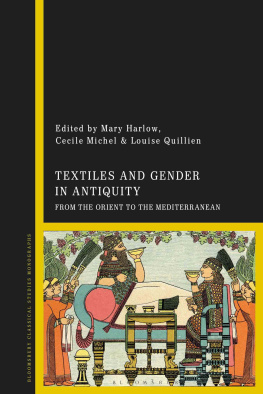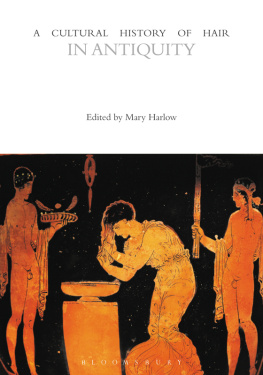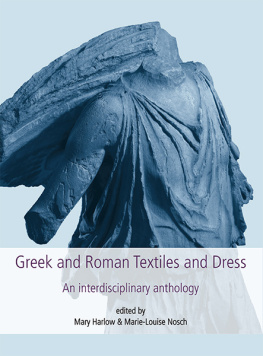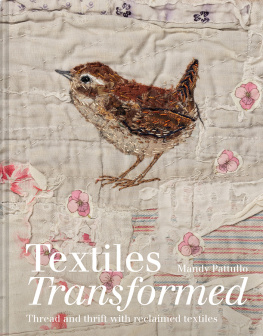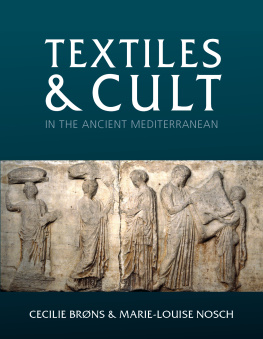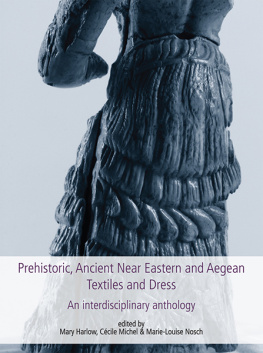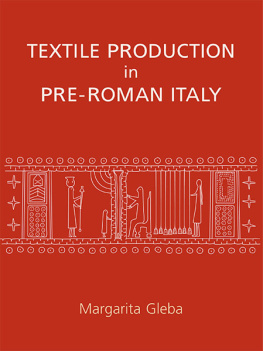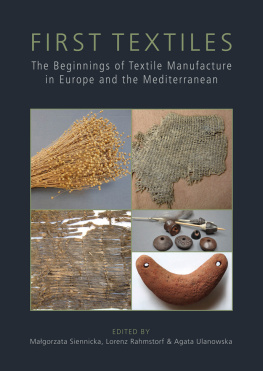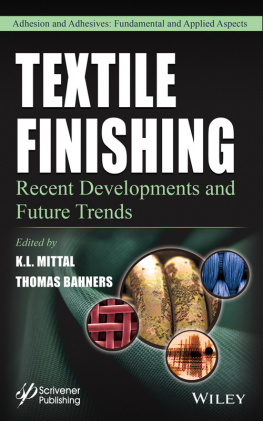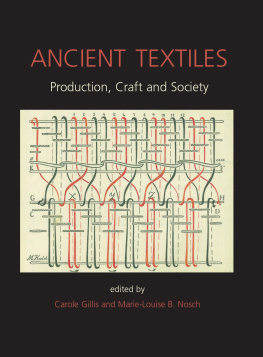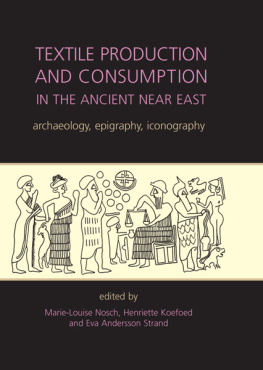
TEXTILES AND GENDER IN ANTIQUITY
To Marie-Louise Nosch,
who has inspired research into ancient textiles
for the past fifteen years
Leicester and Nanterre,
27 January 2020
Also available from Bloomsbury
COSTUME IN GREEK TRAGEDY
by Rosie Wyles
FEMALE MOBILITY AND GENDERED SPACE IN ANCIENT GREEK MYTH
by Ariadne Konstantinou
GREEK AND ROMAN SEXUALITIES: A SOURCEBOOK
by Jennifer Larson

CONTENTS
| Detail from consular diptych of Areobindus, eastern consul 506; ivory. Muse de Cluny, Paris. |
Philippe Abrahami is an Assyriologist and Professor of History and Ancient Near Eastern Archaeology at the University of Lille, France (CNRS HALMA, UMR 8164). His research area covers various topics based on the study of Akkadian and Sumerian documentation. He specializes in ancient warfare, a field that he has developed since his thesis on the military organization of the Mari kingdom during the Old Babylonian period. For his habilitation thesis, he started to work on the cuneiform corpus of Nuzi, a provincial city of the kingdom of Arraphe during the fifteenthfourteenth centuries BCE .
Damien Agut-Labordre is a researcher at the National Centre for Scientific Research (CNRS, ArScAnHAROC, Nanterre, France). As a historian, his works focus on two themes: the economic and social history of Egypt during the first millennium BCE (with a focus on villages and rural communities) and the political history of the Achaemenid Persian period in Egypt (sixthfourth centuries BCE ). He is also a Demoticist involved in several archaeological missions in the Western Desert of Egypt (Kharga Oasis).
Eva Andersson Strand is an associate professor in Textile Archaeology at the University of Copenhagen, and has through the past thirty years gained a broad experience with materials, cultures regions and time periods such as the Viking Age and Bronze Aegean and Ancient Near East. She is the Director of a research centre of excellence, CTR (Centre for Textile Research), at Copenhagen University, and is, together with the CTR team, developing new methods and setting the standards for future research.
Maria Giovanna Biga is Professor of History of the Ancient Near East at Sapienza Universit di Roma in the Department of Sciences of Antiquity. Her research interests focus on political, social and religious history of the third millennium BCE Syria, Eblaite language and culture. She has published editions of Ebla texts and several articles on different aspects of the history of Syria in the third millennium BCE . Her most recent article is Too many horns in the temple of the god Hadad of Aleppo at the time of the Ebla archives (2019).
Catherine Breniquet is Professor of Ancient History of Art and Archaeology at the Universit Clermont Auvergne (France). Her main fields of research are the archaeology of Mesopotamia and textile archaeology. Since 2017, she has been the head of an interdisciplinary and inter-institutional programme on the study of the Roman collections from the Martres-de-Veyre (Puy-de-Dme, France), kept in the Muse Bargoin of Clermont Mtropole. Textiles are part of this programme. Her co-authors, and members of the research team, are Christine Bouilloc, Director of the Bargoin Museum; Marie Bche-Wittmann, Associate Director; and Camille Gaumat and Marion Veschambre, in charge of collections.
Cecilie Brns is Senior Researcher at the Ny Carlsberg Glyptotek in Copenhagen. She is also director of the museums polychromy project, which carries out interdisciplinary investigations of the original paint of the museums ancient artefacts. Her research focus on ancient colours, particularly the polychromy of Graeco-Roman art and architecture, as well as ancient textiles. She has published widely on the religious aspects of textile consumption in ancient Greece and on the polychromy of ancient art.
Barbara Couturaud is an archaeologist, now Researcher at IFPO (Institut Franais du Proche-Orient) and head of the Erbil branch. Her research focuses on Mesopotamian archaeology and iconography during the Early Bronze Age (third millennium BCE ). During her PhD, she studied the corpus of inlays discovered in Mari, now published (2019). Since then, she has also worked on the figuration of the military elites and feminine garments. She has worked on many archaeological excavations in Syria, Jordan, Kuwait, Iraq and France. She is now the Director of the Excavations in Amyan (Kurdistan Regional Government).
Mary Harlow is Associate Professor of Ancient History at the University of Leicester and was Guest Professor at the Centre for Textile Research, Copenhagen (201113, 2020). Her research interests include the study of dress and appearance, and the history of families, age and ageing, and gender in the Roman world. She has published extensively, including contributions to and editing of Greek and Roman Textiles and Dress (with M.-L. Nosch) (2014), A Cultural History of Dress and Fashion in Antiquity (2017) and A Cultural History of Hair in Antiquity (2019).
Francis Joanns is Professor Emeritus of Ancient History at the University Paris I Panthon-Sorbonne. His current research focuses on the first millennium BCE Mesopotamia during the Neo-Babylonian period. He is especially interested in private archives in the social context of the Neo-Babylonian cities and the administrative archives of the temples of southern Babylonia. He also studies the transmission of cultural and religious tradition in Babylonia in the scholars circles. He has collaborated, since its creation in 2000, in the achemenet.com programme, where he manages the online edition of the cuneiform texts from Babylonia.
Hedvig Landenius Enegren is affiliated with the Department of Archaeology and Ancient History at Uppsala University, Sweden and the Swedish Institute of Classical Studies in Rome. She held a Marie Skodowska Curie Fellowship at the Centre for Textile Research (CTR), University of Copenhagen, Denmark, in 201214. Her research interests span from Aegean Late Bronze Age epigraphy (Linear B) to ancient textile and textile tool technology. Her current research project involves the textile tool material from the Swedish Institute in Rome excavations at the Etruscan sites of San Giovenale and Acquarossa.
Lena Larsson Lovn is Professor in Classical Archaeology and Ancient History at the University of Gothenburg. Her research interests focus on textiles and dress, visual cultures, social history and aspects of gender especially in Roman society. She initiated the network ARACHNE on gender studies in antiquity. Among her recent publications are studies of the role of Roman dress and visual communication (2017), male and female economy and work identities (2013, 2016, 2019).
Brigitte Lion is Professor at Paris I Pantheon-Sorbonne University in the Department of History. Her research interests focus on cuneiform archives, especially from the second millennium BCE , social history and gender studies. With D. Stein, she has published two volumes of Nuzi private archives dating to the fourteenth century BCE (2001 and 2016) and co-edited (with C. Michel) The Role of Women in Work and Society in the Ancient Near East
Next page
